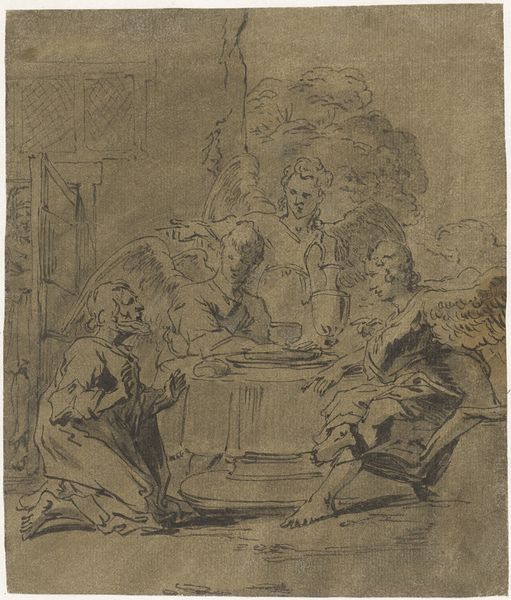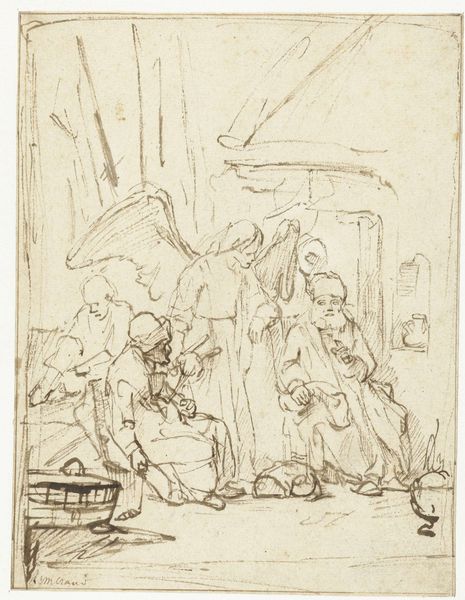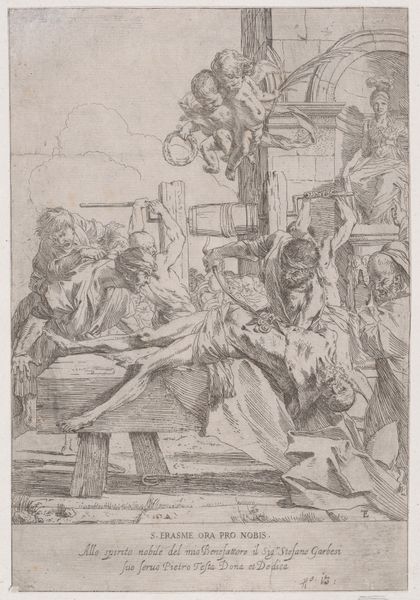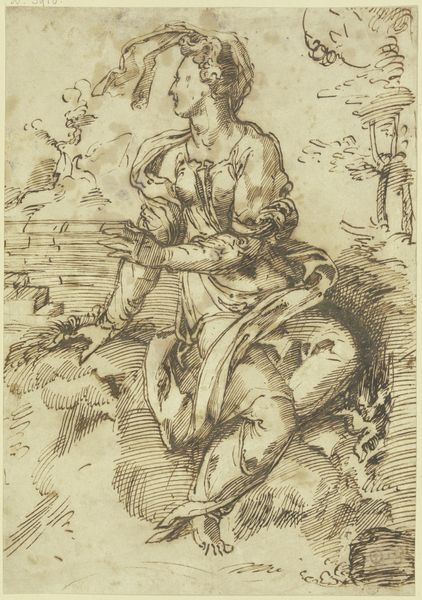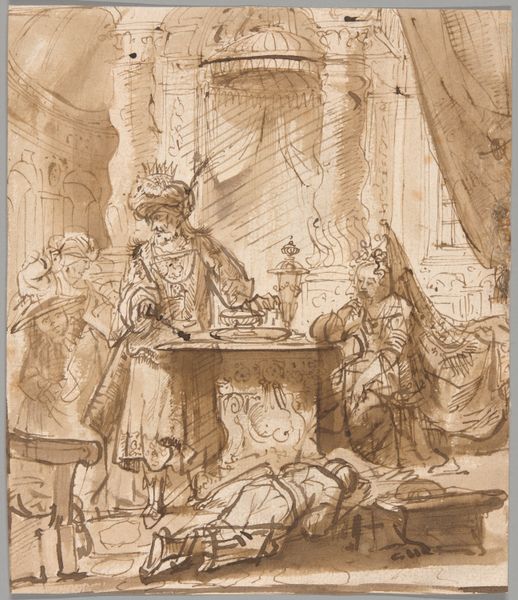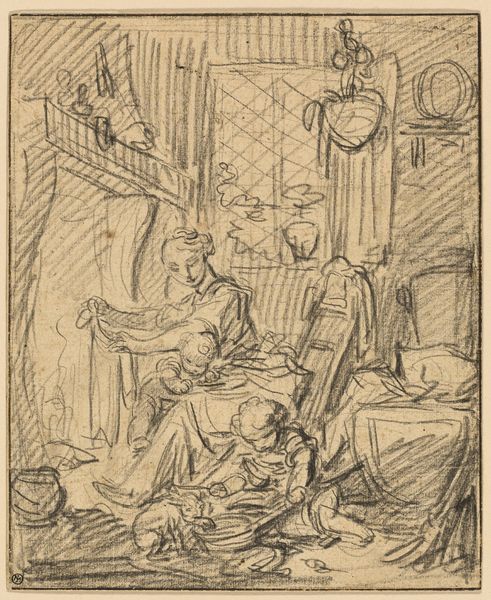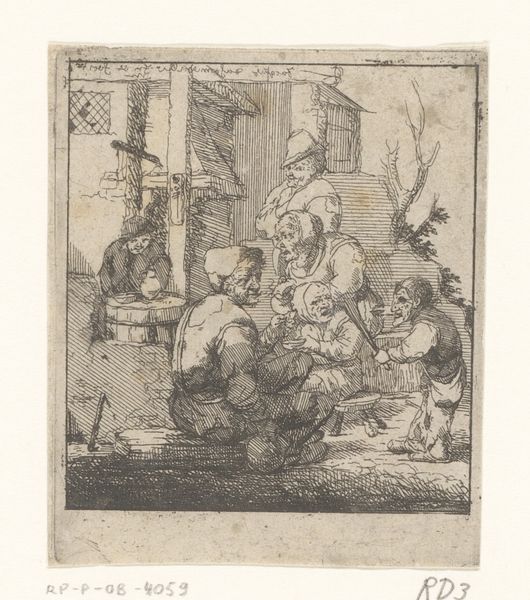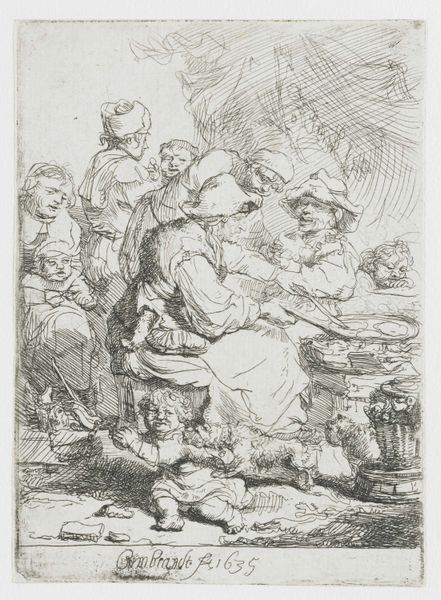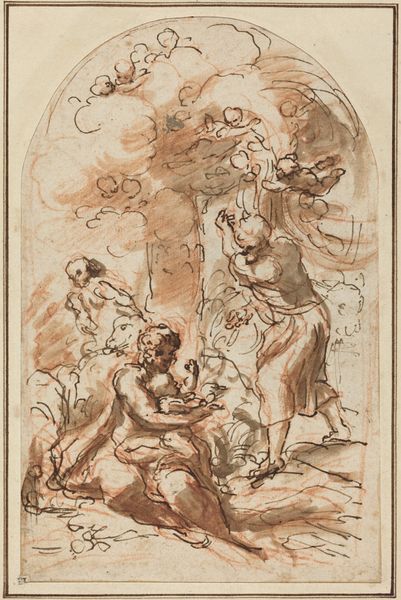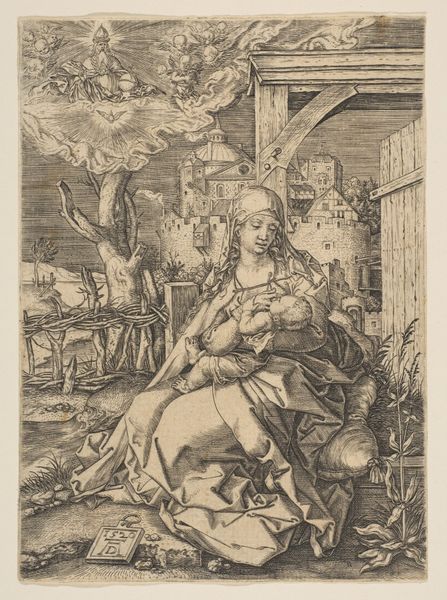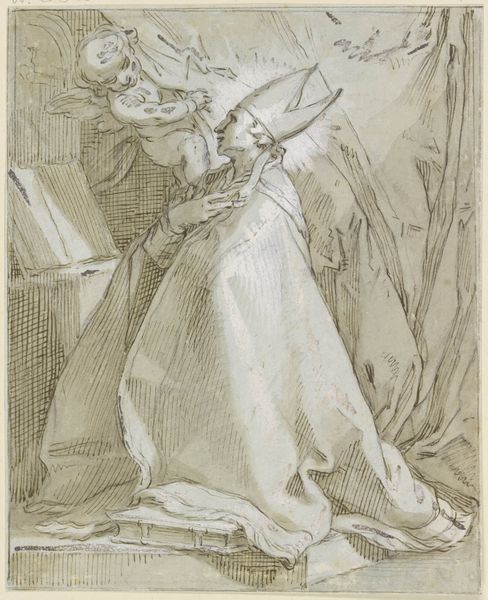
Saint Anthony of Padua with the Christ Child, in an Interior 1770
0:00
0:00
Dimensions: 9 5/8 x 6 15/16 in. (24.4 x 17.7 cm)
Copyright: Public Domain
Editor: Here we have Giovanni Domenico Tiepolo’s "Saint Anthony of Padua with the Christ Child, in an Interior," made around 1770, using ink for a drawing. It has a sketch-like quality to it, immediate and ephemeral. How do you read this piece? Curator: For me, this drawing invites us to consider the labor involved in creating an image for mass consumption. Tiepolo comes from a family that was almost a manufacturing house for paintings. Think about the repetitive actions, the economy of line he's achieved to produce these quickly and efficiently to serve as perhaps models for other works or prints. The drawing itself becomes a commodity, a step in the production chain. Editor: So you are saying that it is not only a drawing, but that it can be seen as part of a wider operation, aimed at the production of art objects? I see your point. The medium itself speaks to that; ink is easily reproduced, easily distributed, much like, say, pamphlets? Curator: Exactly. And think about the availability of materials like paper and ink in 18th-century Venice. Were these luxury items or readily accessible to workshops? And to whom were these images marketed? Were they meant for private devotion, or did they circulate more widely, shaping popular religious sentiments? What might it tell us that we see the saint rendered this way? The image isn't particularly flattering or glamorous, the forms not perfect and sublime as one might expect, given it is a religious scene with an infant Jesus. It really pushes the boundaries between devotion and decor. Editor: I didn't really notice before how casual and somewhat crude some of the lines are! Considering this now, I'm wondering what it would be like to witness Tiepolo actually at work, mass-producing drawings for his clientele. Curator: That’s an interesting thought experiment. Thinking about art from a material perspective really shifts our focus. We start questioning not just what the artwork represents, but how it was made, who made it, and what conditions enabled its creation. Editor: I will certainly keep this perspective in mind going forward. It definitely allows for a more grounded understanding of this image, by looking into its context.
Comments
No comments
Be the first to comment and join the conversation on the ultimate creative platform.
